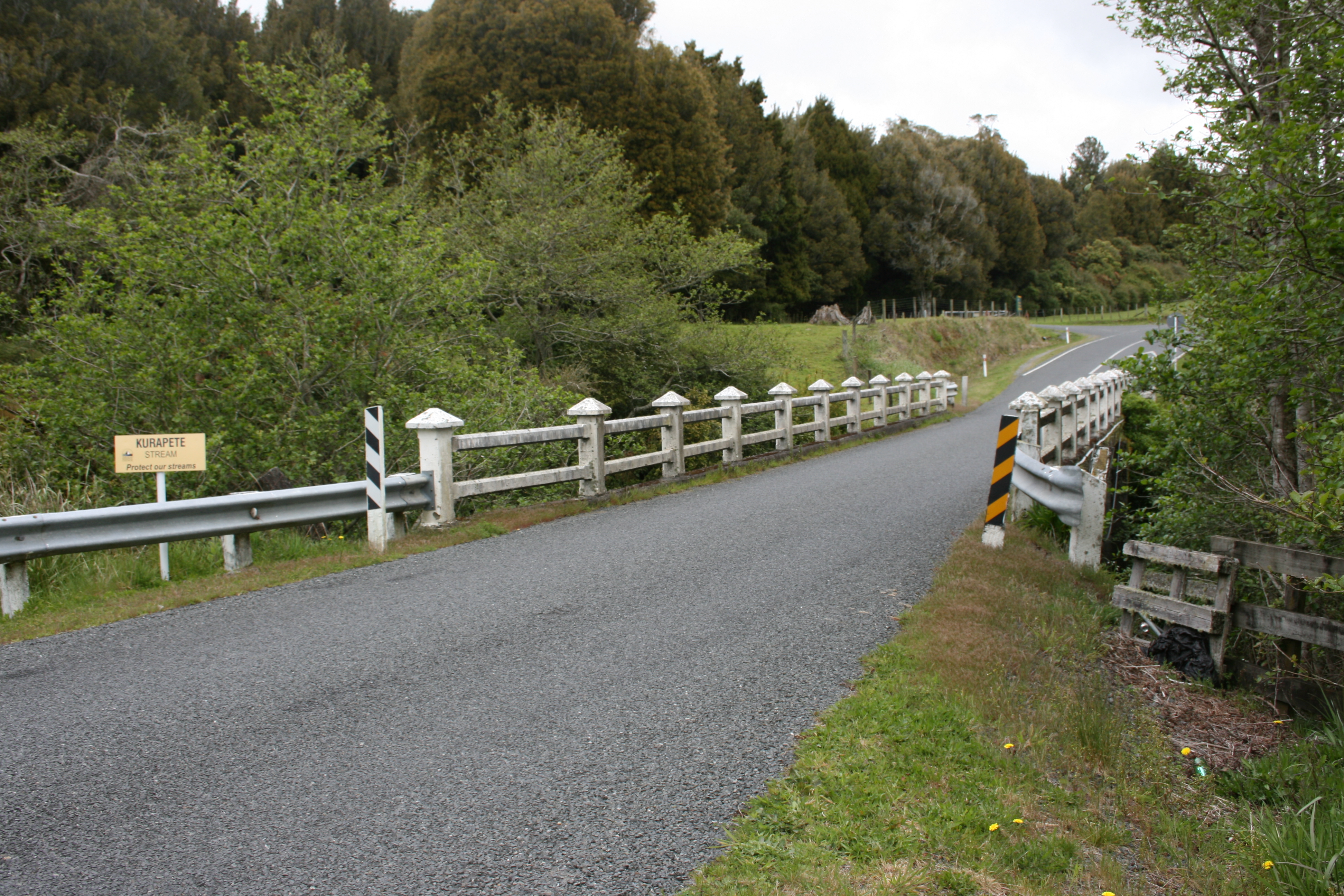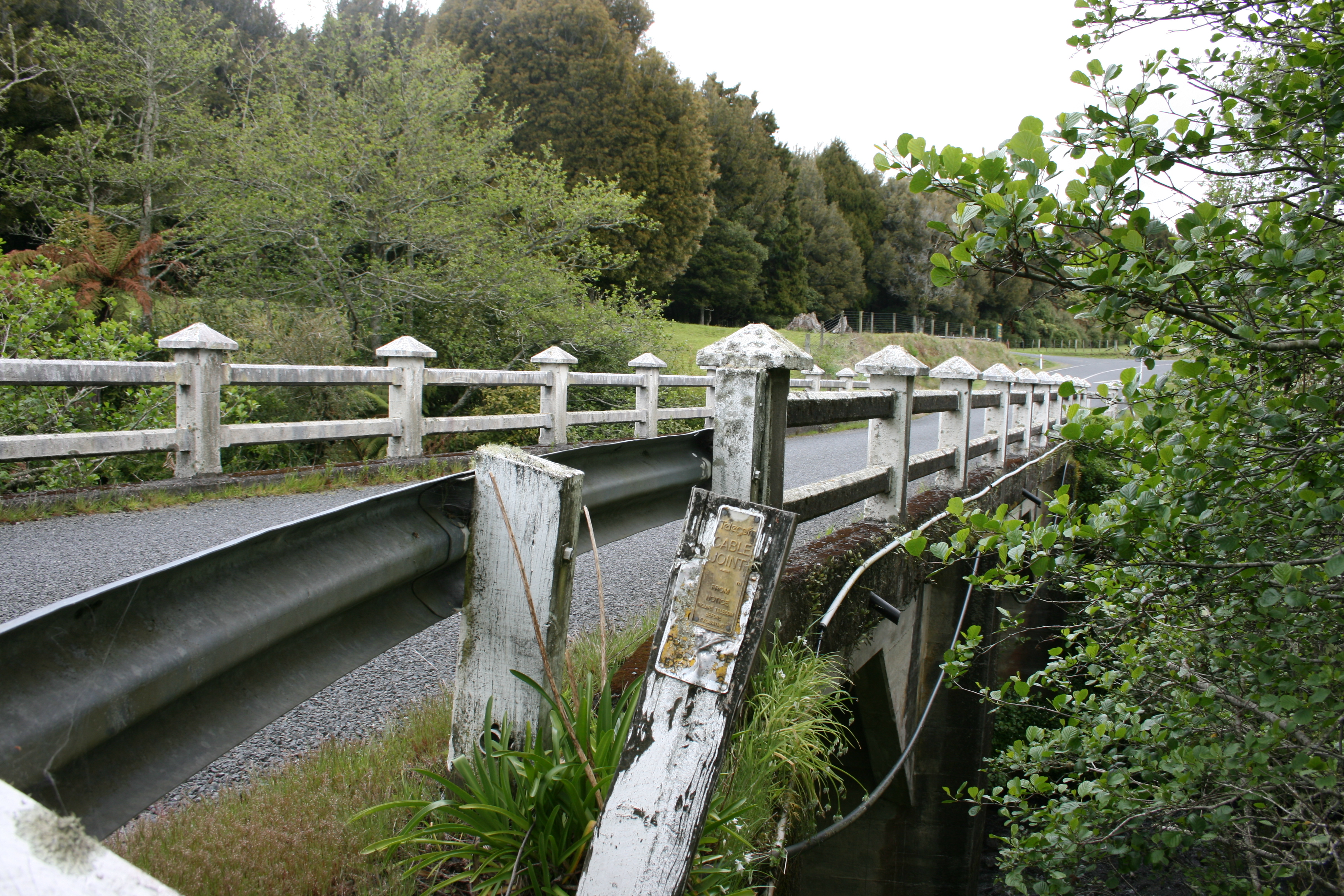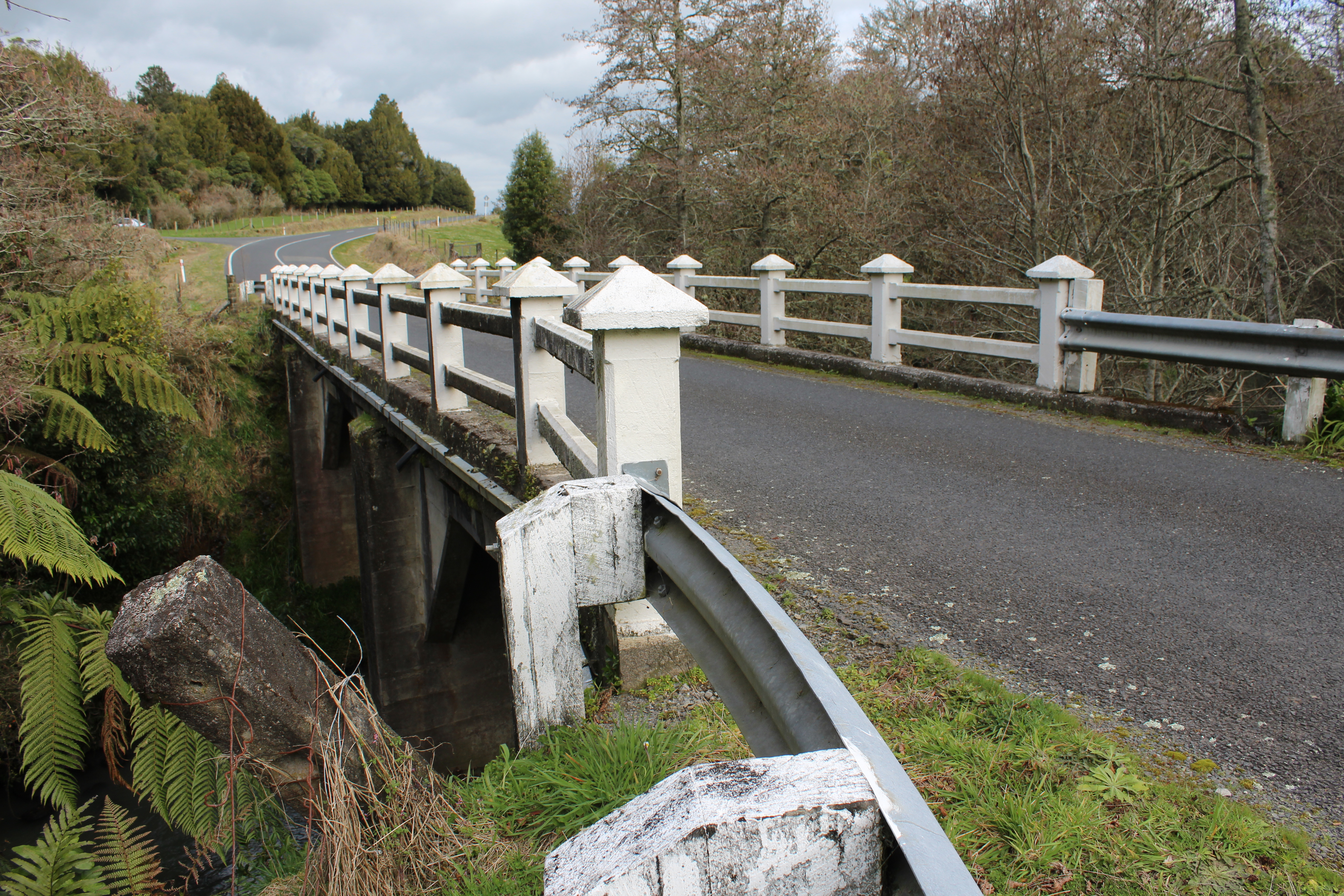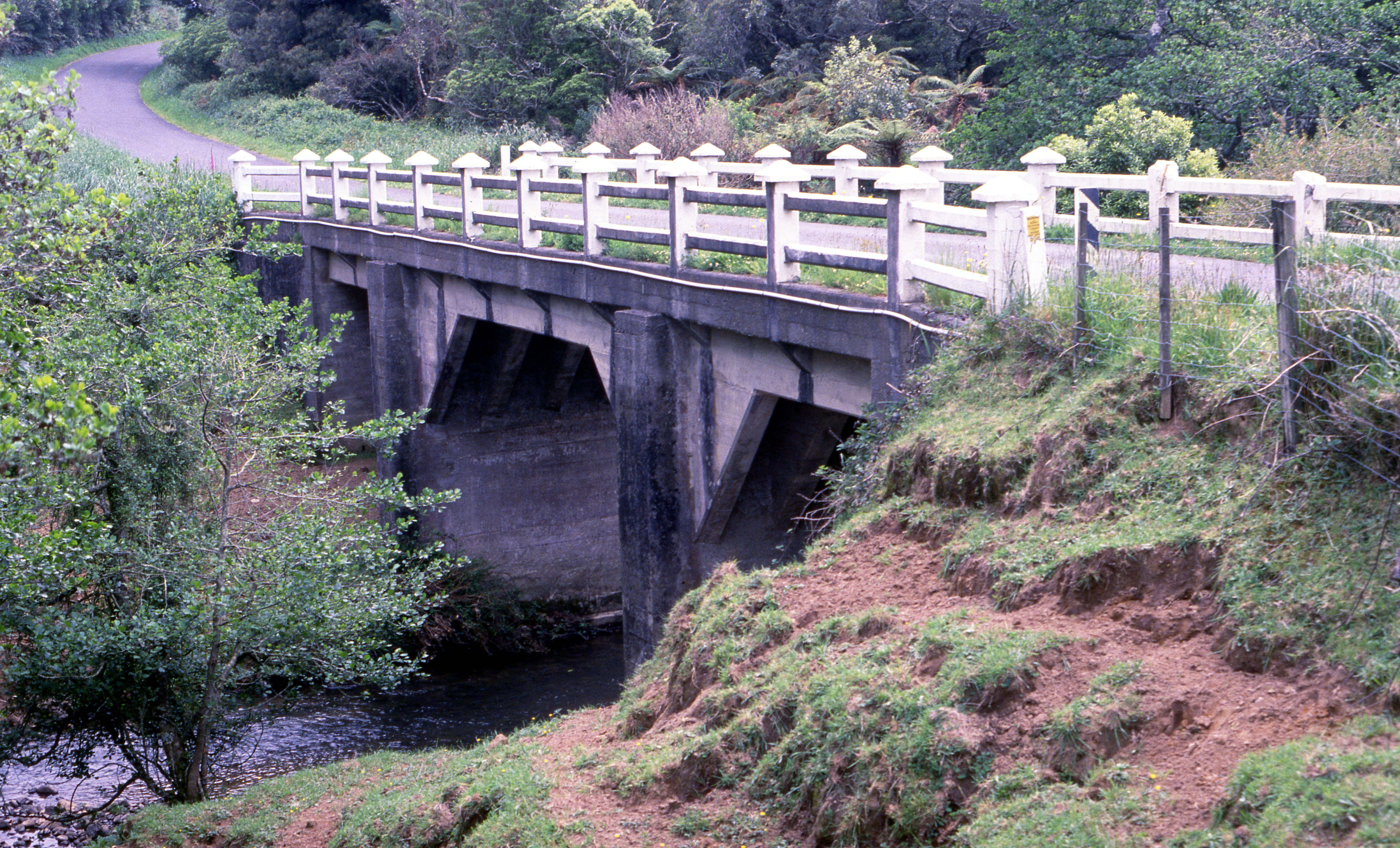







Taranaki's many streams from the mountain formed major problems for settlers and road-makers. First bridges over the multitude of waterways were often wooden structures, but by the 1920s were decaying and in need of major reconstruction. Reinforced concrete was the favoured material for replacement bridges and for new ones in the expanding countryside. Many of those concrete bridges remain on Taranaki's rural roads.
Taranaki Daily News, 29 April 1919:
Moa Road Board Meeting:
"The board went into commitee to consider a report by Mr W [C]. F. Dowsett, Clifton County engineer, on the proposed concrete bridge over the Kurapete Stream. Plans had been previously drawn up by another engineer who had since left Taranaki. On resuming it was resolved: "That the amendment suggested by Mr Dowsett to the original plans be adopted."
Taranaki Daily News, 11 August 1919:
Moa Road Board Meeting
"The engineer reported that the bridge over the Kurapete on the Everett Road was almost completed."
The builder was C. E.[Charles Edward] Roebuck who, later, also built the Makara Stream Bridge at Waitui.
The Kurapete bridge was reported to be "one of the most compact bridges of its kind in the Moa Riding, and is a credit to the Board, engineer, and builder. (Taranaki Daily News 16 February 1920)
The total cost of the bridge was reported as £1146 17s 8d. (Taranaki Daily News 6 April 1921)
Earlier - in January 1919 - the Moa Road Board decided to buy a concrete mixer for the building of the Kurapete and Makara bridges.
Please do not reproduce these images without permission from Puke Ariki.
Contact us for more information or you can order images online here.